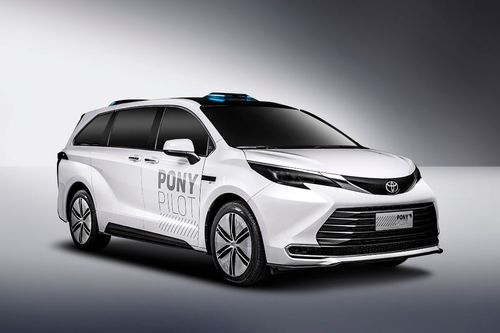Pony.ai debuts latest autonomous vehicle system
New offering houses 23 total sensors and a complete redundancy safety mechanism

New offering houses 23 total sensors and a complete redundancy safety mechanism
Autonomous vehicle (AV) developer Pony.ai has unveiled its latest autonomous driving system.
The system was shown equipped in a Toyota S-AM, a seven-seat hybrid electric vehicle that is set to be road tested in China later this year ahead of robotaxi deployments in 2023.
“The introduction of the world-class Toyota S-AM into the PonyPilot+ fleet represents another major achievement of the deep strategic cooperation between Pony.ai and Toyota,” said James Peng, co-founder and CEO of Pony.ai.
“Pony.ai’s new generation of autonomous driving systems powered by NVIDIA and designed for L4 automotive-grade mass production, as showcased on the S-AM, will further prove the safety and technical reliability and promote the large-scale application of AD technology,” he added.
What’s under the hood?
The new system has a suite of 23 total sensors, including four solid-state lidar sensors on the roof, three near-range lidar on the body of the vehicle, wave radars at the corners of the roof; one long-range forward-facing wave radar, and 11 cameras around the roof and body of the vehicle.
The system’s traffic light camera has a resolution rate 1.5 times that of the previous generation.
The S-AM model houses exclusive design elements for the prospective Pony.ai robotaxi fleet. This includes rooftop signaling units which have a horizontal lighting unit on the front and three vertically placed lighting stripes on the rear. These provide external communication and interaction, demonstrating the robotaxi’s status and intentions.
The new system is built on Nvidia DRIVE Orin. Pony.ai and Nvidia have been working together since 2017. The AD system offers multiple configurations with one or more DRIVE Orin processors and automotive-grade NVIDIA Ampere architecture GPUs, meaning it can potentially enable scalable deployments.
“Designed for automotive-grade mass production, the new autonomous driving system is a major breakthrough in software, computing capability and redundancy,” said Tiancheng Lou, Pony’ai co-founder and CTO.
Nothing pony about this
Prior to its announcement, Pony.ai has been collaborating with Luminar to release a new sensor platform for autonomous robotaxis.
The partnership sees Luminar’s Iris Lidar integrated into Pony.ai’s upcoming vehicle fleet, with a multi-sensor 360-degree configuration protruding just 10cm from the vehicle roof.
The Chinese firm is working with Toyota to create robotaxi services in California, with the Japanese auto firm previously investing $400 million into Pony.ai a few months before it acquired Lyft’s self-driving division for $550 million.
About the Author(s)
You May Also Like


.jpg?width=700&auto=webp&quality=80&disable=upscale)
.jpg?width=700&auto=webp&quality=80&disable=upscale)
.jpg?width=700&auto=webp&quality=80&disable=upscale)
.jpg?width=300&auto=webp&quality=80&disable=upscale)
.jpg?width=300&auto=webp&quality=80&disable=upscale)
.jpg?width=300&auto=webp&quality=80&disable=upscale)

.jpg?width=300&auto=webp&quality=80&disable=upscale)